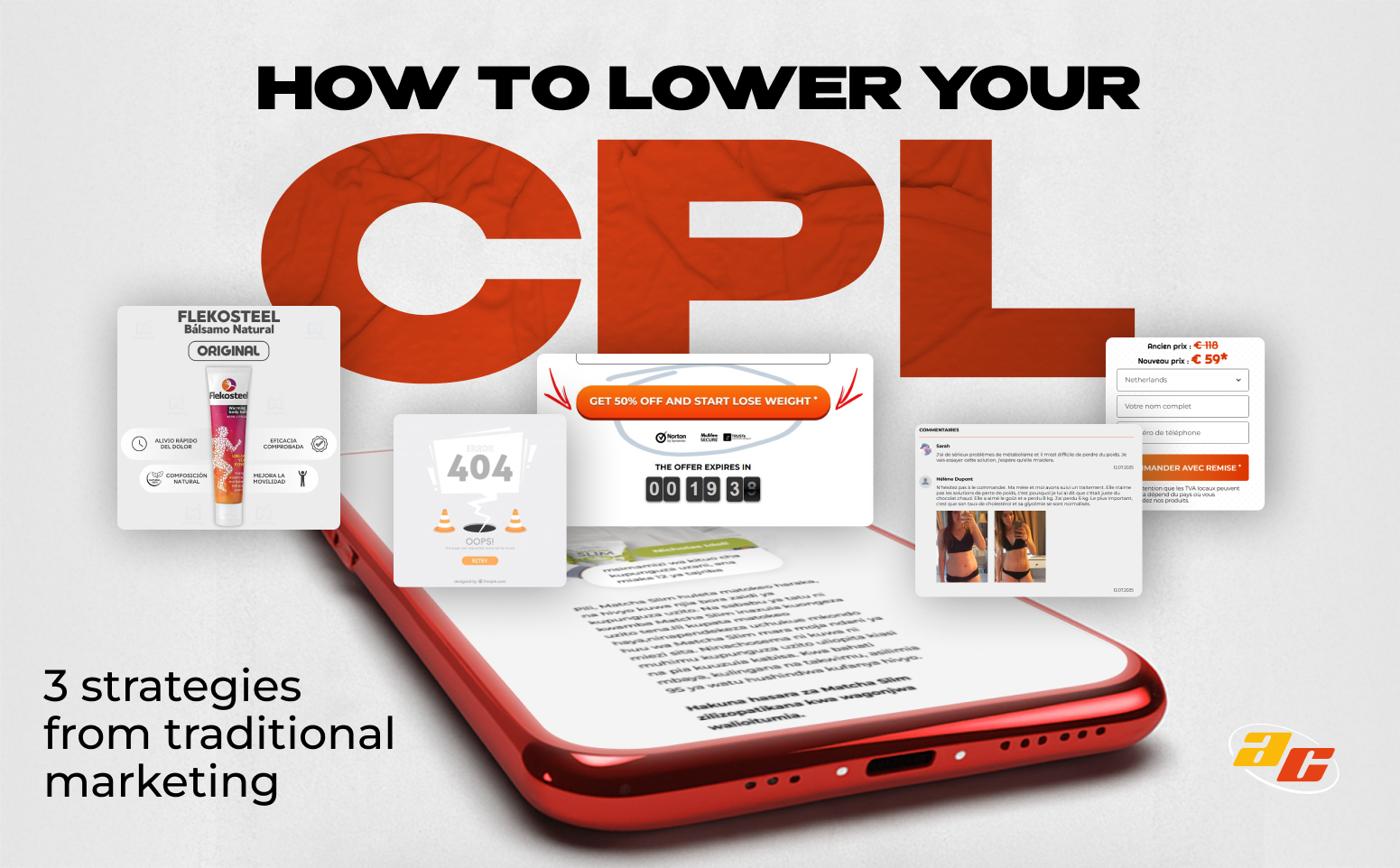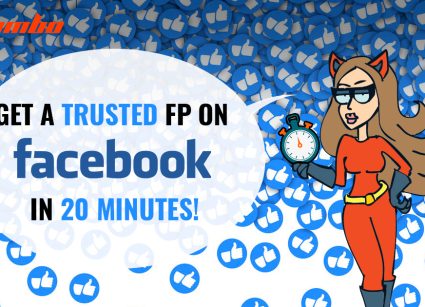-
 How to lower CPL30.7.2025Reading Time: 5 minutes
How to lower CPL30.7.2025Reading Time: 5 minutesEvery affiliate marketer keeps a close eye on their cost per lead (CPL) — because if this number goes out of control, profit goes out the window.
In this article, we’ll break down what CPL is, what factors influence it, where you can optimize, and where you simply have to adapt. There will be a bit of math — but simplified, so you can apply it right away and run more profitable campaigns.
What is CPL
Cost per lead or CPL is the cost of attracting an application for a product or service from a potential client.
Lead — a user who has shown interest in your product, for example, by leaving contact details in a form on the website. The call center then contact the potential buyer and guide them through the stages of the sales funnel.
CPL = Advertising channel costs / Number of requests from the traffic channel
The following help determine the acceptable CPL:
- Conversion rate to sale
- Cost per order (CPO)
- Average payout
- Target profit
Once you understand how many conversions you need to hit your profit goal, you can calculate how much you can afford to spend per lead. In traditional marketing, it would look like this:
- Target number of sales = Target profit / Average payout
- Cost per sale = Ad spend / Target number of sales
- Acceptable CPL = Cost per sale × (Conversion rate to sale / 100%)
Let’s break it down with an example from affiliate marketing:
An affiliate wants to earn $7,000 in profit next month. They get $20 per approved lead. The expected approval rate for the offer is 30%. They’re planning to spend $4,000 on traffic.
- Target number of approved leads = 7,000 / 20 = 350
- Cost per approved lead = 4,000 / 350 = $11.43
- Acceptable CPL = 11.43 × (30 / 100) = $3.43
So, to hit a $7,000 profit with a 30% approval rate and $20 payout, the affiliate must keep their CPL at or below $3.43.
What CPL depends on
CPL depends on many factors. Let’s look at the changes that affect the cost per lead and which can — and should — be managed through marketing.
Factors affecting CPL that depend on the marketer
- Target audience specifics
It’s important to understand buyers in order to better segment the audience, choose targeting, create creatives, landing page texts, and so on. - Ad quality
If creatives don’t grab users’ attention, the traffic source brings few leads, and the cost per lead rises. - Ad setup quality
Timing, geography, selected semantics, targeting — all affect CPL. - Landing page quality
If the landing page is inconvenient, the company gets fewer leads, and the cost per lead rises.
The cost per lead also depends on the market and product specifics. Now, let’s consider factors that it’s impossible or very difficult to influence through marketing.
Factors affecting CPL that are hard to influence with marketing
- Geo / vertical / product
Some offers are inherently more expensive and/or harder to promote. Nutra in Tier-1, sweepstakes in DE, or gambling offers — all have very different starting conditions. - Sales cycle
If the user needs time to think (for example, in niches with expensive products), they won’t convert immediately. - Seasonality
During the season, customers buy more actively, so CPL may drop; off-season, it can rise. - Competition
If there’s a lot of traffic volume in the same geo and vertical, bids go up. Especially if it’s a new offer or a big promo from the network.
How to reduce cost per lead
Increase ad click-through rate (CTR)
Clicks on ads are the first step of the sales funnel. You can evaluate ad effectiveness by CTR. The lower the CTR, the lower your ad’s position in the auction. That means less traffic, fewer leads, and, accordingly, a higher cost per lead.
Adjust targeting settings
Monitor ad performance by time of day and test how ads perform in different GEOs. This helps optimize impressions and save your ad budget.Change bidding strategy and optimization model
Sometimes it’s more profitable to switch to manual bidding or another optimization model — especially if you know where traffic consistently converts and have accumulated lead data.Improve creatives
Evaluate ads with low CTR and think about which elements to change to make them more engaging.Test changes
Track how ad changes affect CTR. Introduce no more than one new element at a time to clearly see the result.Reduce your bounce rate
Bounce rate means that a user visited the site and almost immediately closed it. The potential client spent too little time on the page to get interested in the product and didn’t take any action on the site.
Each niche has its own acceptable bounce rate. According to average data from gorocketfuel.com, 10–40% is an optimal range to aim for.
Bounce rates vary significantly between online stores, websites, and landing pages. Typically, simple landing pages have a much higher bounce rate.
Increase your loading speed in PageSpeed Insights
According to Think with Google, 90% of users won’t wait for a site that takes longer than five seconds to load.Check that your site is mobile-friendly using Google Mobile-Friendly Test
Pages should fully load on smartphones and tablets, and forms should work properly.Keep visitors engaged
Add a callback form, online chatbot, reviews, and information about promotions and discounts on your landing pages.Increase your website conversion
The more leads take the desired action — for example, leave their phone number — the lower the CPL and the higher the potential revenue.
Create user-friendly landing pages with engaging content
Detailed product descriptions, images and videos, tips on how to use the product, case studies — all this helps convert a lead into a buyer.Add reviews
Users rely on others’ experiences when choosing a product or service. Providing product reviews helps overcome doubts and move leads further down the sales funnel.Consider mobile device specifics
The site on smartphones and tablets should work just like on desktop. If buttons don’t display or forms don’t work, conversion may drop.Use services to capture user contacts
Widgets help keep visitors on the page, answer their questions, and unobtrusively request their contact info. A callback widget can be added to every landing page as a button, appear when a user tries to leave the site, or show up on click of a site element. The form should be short — only name and phone number — since users are unlikely to fill out a full form just to request a call.
Run A/B tests before implementing changes to your website and landing pages.

Conclusion
It’s important to monitor cost per lead to understand how effectively your advertising is working and to save your ad budget. Tracking CPL also helps evaluate traffic sources — which bring leads and sales, and which are not profitable.



Thanks for the tips.
Nice
> Just logged into my AdCombo account! 💻🔥
Time to start affiliate marketing and make some profit 💰💪
#AdCombo #AffiliateMarketing #OnlineIncome